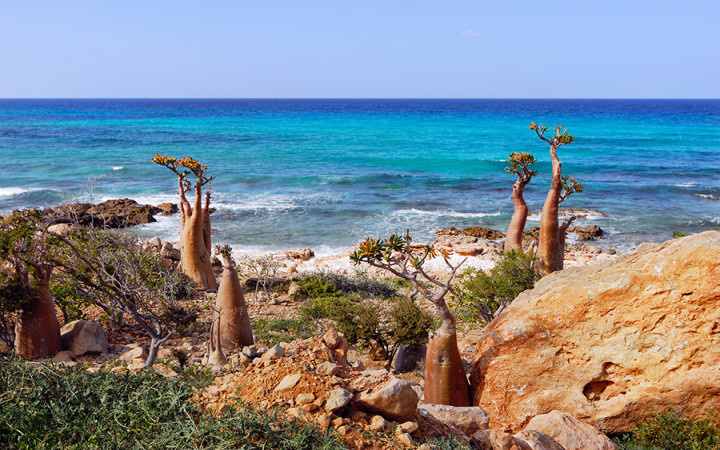Today’s Wonder of the Day was inspired by Wonder Friend. Wonder Friend Wonders, “Where is Socotra?” Thanks for WONDERing with us, Wonder Friend!
Do you ever daydream about traveling the world? If you ask any travel agent, there are all sorts of dream destinations. Some people want to soak up the Sun on the beaches of Hawaii. Others want to watch for whales while sailing the waters of Alaska. Maybe you’d love to climb Mt. Everest or dive into the Mariana Trench.
Today, it seems like most parts of the world are connected, thanks to technology. But there are still some very remote locations on our planet! We’ll learn more about one of those places today. We’re headed to an archipelago (chain of islands) in the Arabian Sea. Our destination? Socotra!
Four islands make up Socotra. The nation is found off the easternmost part of the Horn of Africa. It’s about 155 miles northeast of Somalia. It’s part of Yemen and is about 210 miles southeast of that country’s mainland. One visit to Socotra would show you that it’s unlike any other place on Earth.
What would you think an island in the Arabian Sea might look like? Beautiful, sandy beaches and palm trees might come to mind. However, the landscape of Socotra usually brings one word to mind: bizarre.
Yes, there are sandy beaches. But Socotra’s 1,400 square miles is also full of large mountains, deep valleys, and limestone caves. The country is also home to desert plains with large sand dunes. Overall, its hot, dry climate makes for a harsh environment. The islands are full of native plants and animals unlike any others on the planet.
Over one-third of Socotra’s 825 plant species can’t be found anywhere else. One of these is the rare dragon’s blood tree, which looks a bit like an umbrella. The island also hosts the giant succulent tree. Species of cucumber trees and pomegranates also grow there that are not found elsewhere.
Most of the reptiles and land snails that live there are also special to the islands. Socotra is also home to many species of birds and marine life. However, you won’t find any native amphibians. There’s also only one native mammal: the bat. This diversity of life, along with Socotra’s natural beauty, led UNESCO to make Socotra a World Heritage Site in 2008.
Does anyone live in Socotra? Yes! About 40,000 members of the Bedouin culture call the islands home. Many of them make a living herding goats, fishing, and pearl diving. They also raise some crops, such as dates.
Much of Socotra’s history is a mystery. The official language of the islands is Arabic because it’s a part of Yemen. However, most people there speak an unwritten Socotri language. It dates back to pre-Islamic times. Archeologists have also found the ruins of a city on Socotra. They believe it dates back to the 2nd century C.E. Some local legends hold that Socotra is the location of the Garden of Eden described in religious texts.
Have you ever been to Socotra? Would you like to visit? Socotra is difficult to get to, so it doesn’t welcome many visitors. Still, you’d be sure to see new sights there! It would also be a chance to learn about new plant and animal life.
Standards: NGSS.LS4.C, CCRA.L.3, CCRA.L.6, CCRA.R.1, CCRA.R.2, CCRA.R.4, CCRA.R.10, CCRA.SL.1, CCRA.SL.2, CCRA.W.2, CCRA.W.4, CCRA.W.7, CCRA.L.1, CCRA.L.2




